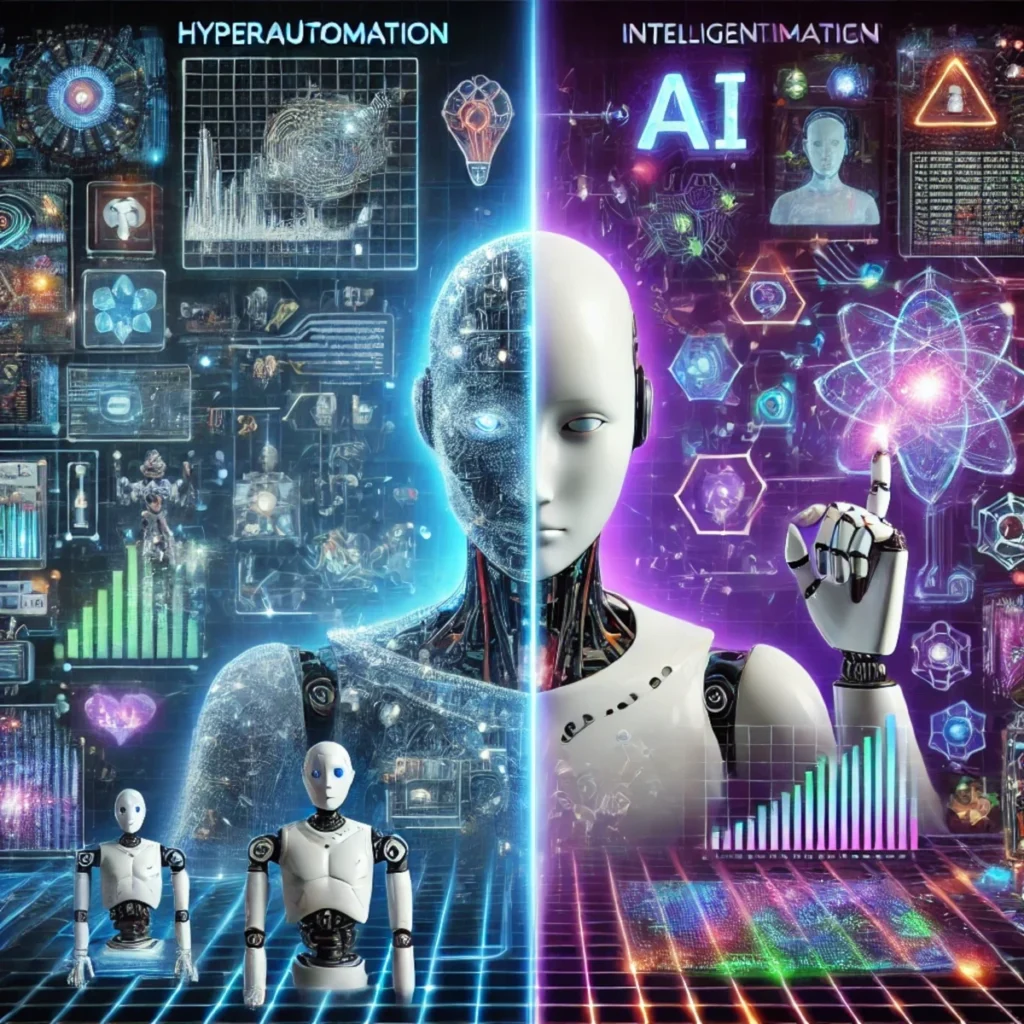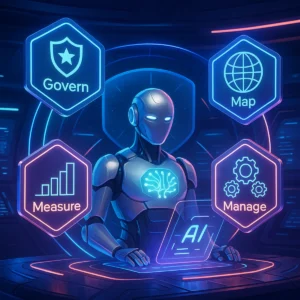Email issues can cause headaches for WordPress users, from lost...
Read More
In today’s rapidly evolving business landscape, automation is more than a buzzword, it is a strategic imperative.
As Organizations strive to boost efficiency, reduce costs, and drive innovation, two approaches have emerged at the forefront of digital transformation, and they are intelligent automation and hyperautomation.
But what exactly is the difference between the two, and which one offers the best pathway forward?
In this detailed post, we will unpack the concept behind intelligent automation and hyperautomation, compare their benefits and challenges, and discuss how companies can leverage these strategies to stay ahead of the competition.
Defining The Two Approaches

Intelligent Automation
Intelligent Automation combines traditional process automation with artificial intelligence (AI) and machine learning (ML).
This approach goes beyond simply automating repetitive tasks, it enhances decision making, adapts to new data, and continuously learns from past interactions.
- Key Characteristics:
- AI and ML Integration: Uses algorithms to make informed decisions, predict outcomes, and optimize processes.
- Cognitive Capabilities: Supports tasks that require pattern recognition, natural language processing, and data analysis.
- Enhanced Efficiency: Automates routine tasks while enabling smarter, context aware operations.
Intelligent automation is ideal for scenarios where the goal is to augment human decision making and reduce the burden of manual, repetitive work with the help of AI insights.
Hyperautomation
Hyperautomation takes automation a step further by integrating a broad spectrum of advanced technologies such as Robotic Process Automation (RPA), AI, ML, processing mining and more, in order to automate as many business processes as possible.
It is a holistic strategy aimed at identifying, automating, and optimizing complex workflows across an organization.
- Key Characteristics:
- End To End Process Automation: Focuses on automating entire workflows rather than isolated tasks.
- Integration Of Multiple Technologies: Combines RPA, AI, ML, and other tools to provide a comprehensive automation framework.
- Continuous Improvement: Employs process mining and analytics to constantly refine and enhance workflows.
Hyperautomation is the next evolution in digital transformation enabling businesses to automate complex multi-step processes and drive significant operational efficiencies.
Comparing Intelligent Automation & Hyperautomation
Scope And Focus
- Intelligent Automation focuses on augmenting specific tasks or decision points with AI and ML, making it well suited for improving individual processes.
- Hyperautomation takes a broader approach, aiming to automate entire business processes from start to finish, often integrating several automation tools and technologies.
Complexity And Implementation
- Intelligent Automation is typically less complex to implement on a smaller scale, making it an ideal starting point for organizations new to AI driven automation.
- Hyperautomation requires a more comprehensive strategy, as it involves multiple tools, cross functional workflows, and significant integration efforts across various systems.
Benefits
- Intelligent Automation:
- Offers rapid insights and smarter decision making at a granular level.
- Enhances human capabilities by reducing the manual workload on repetitive tasks.
- Hyperautomation:
- Drives transformative, end to end process improvements that can reshape entire business operations.
- Enables scalability by automating a wide range of processes and continually optimizes workflows.
Challenges
- Intelligent Automation:
- May be limited in scope if applied in isolation, potentially leaving broader process inefficiencies unaddressed.
- Requires accurate data and robust AI models to function effectively.
- Hyperautomation:
- Implementation can be complex and resource intensive, requiring significant upfront investment and change management.
- The integration of multiple technologies may lead to interoperability challenges and need for continuous oversight.
Strategic Implications For Businesses
Embracing A Phased Approach
For organizations looking to transform their operations, a phased approach can be effective.
Start with Intelligent automation to target key tasks and gradually expand towards hyper automation as your processes mature and integration challenges are addressed.
Focus On Data Quality And Governance
Both approaches rely heavily on high quality data.
Investing in robust data management practices is essential to ensure that AI and automation tools can function optimally, delivering accurate insights and consistent performance.
Continuous Monitoring And Improvement
In a rapidly changing digital environment, it is crucial to continuously monitor automated processes and adapt to new challenges.
Leveraging process mining and real time analytics can help identify bottlenecks, allowing for ongoing refinement and optimization of your automation strategy
Build A Collaborative Ecosystem
Successful automation initiatives require collaboration across IT, operations, and business units.
Aligning objectives and maintaining open communication channels will ensure that automation efforts are integrated seamlessly and deliver maximum value.
Final Thoughts and Invitation to Engage
Intelligent automation and hyperautomation each offer powerful strategies to drive digital transformation, but they serve different purposes and come with their own set of challenges.
By understanding the nuances between the two, businesses can choose the right approach, or a combination of the two that bests suits their needs.
As we continue to navigate the complexities of modern digital operations, the ability to automate and optimize processes will be a differentiator in achieving competitive advantage.
What are your thoughts on the future of automation in your organization?
Have you begin implementing intelligent automation or hyperautomation, and what challenges or successes have you experienced?
We would love to hear your insights and experiences.
Join the conversation in the comments below and share your perspective on how automation is reshaping the future of business!
Source: GigaOm – Intelligent Automation vs. Hyperautomation: What’s the Score?
NIST AI Risk Management Framework: A Practical Guide
The rapid rise of artificial intelligence offers organizations incredible opportunities,...
Read MoreAndroid 16 Features: Top Updates & Improvements (vs Android 15)
Android 16 features are rolling out with Google’s latest OS...
Read MoreApple CarPlay 2025 features: All the New Features and Enhancements
Apple CarPlay 2025 features are transforming the way drivers and...
Read More



Leave a Reply